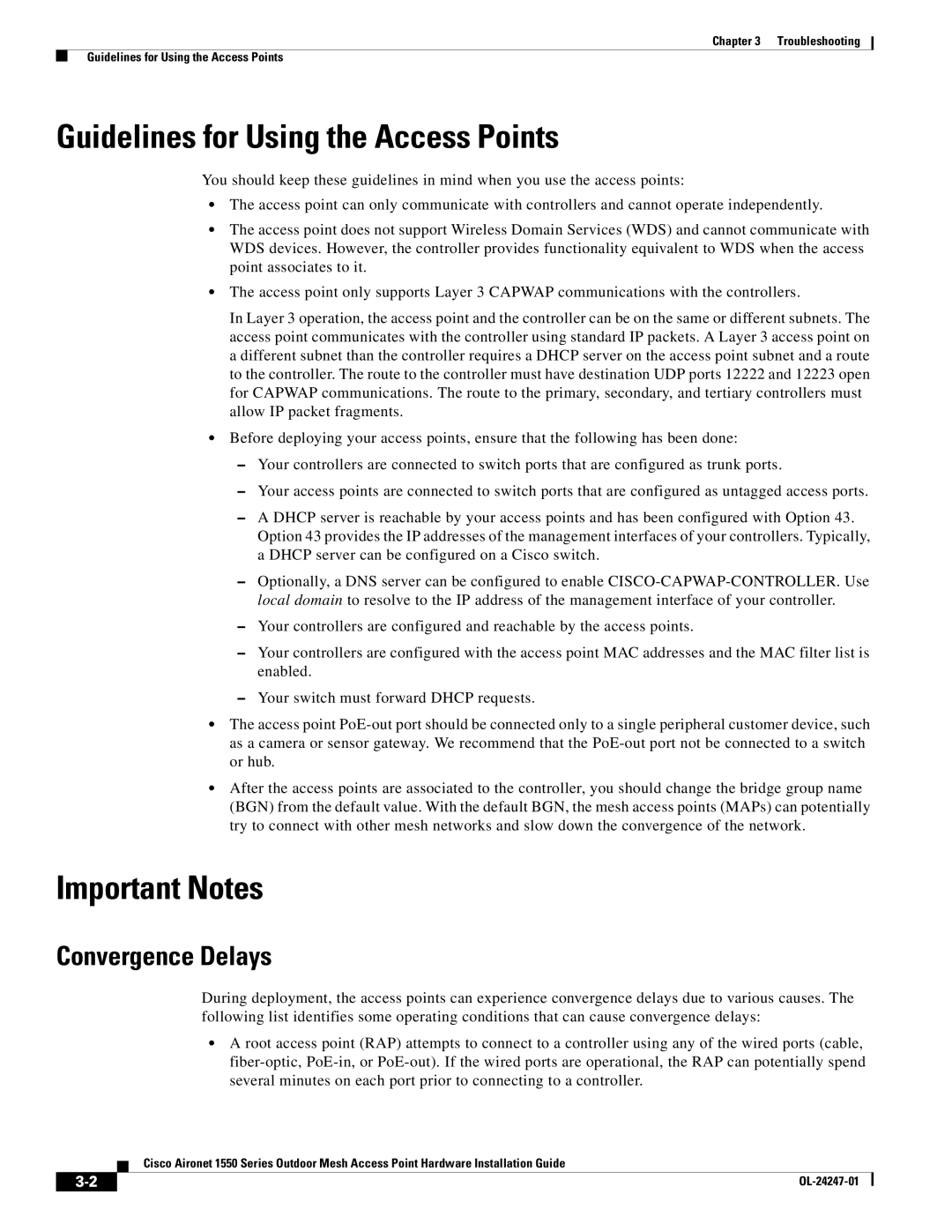
Chapter 3 Troubleshooting
Guidelines for Using the Access Points
Guidelines for Using the Access Points
You should keep these guidelines in mind when you use the access points:
•The access point can only communicate with controllers and cannot operate independently.
•The access point does not support Wireless Domain Services (WDS) and cannot communicate with WDS devices. However, the controller provides functionality equivalent to WDS when the access point associates to it.
•The access point only supports Layer 3 CAPWAP communications with the controllers.
In Layer 3 operation, the access point and the controller can be on the same or different subnets. The access point communicates with the controller using standard IP packets. A Layer 3 access point on a different subnet than the controller requires a DHCP server on the access point subnet and a route to the controller. The route to the controller must have destination UDP ports 12222 and 12223 open for CAPWAP communications. The route to the primary, secondary, and tertiary controllers must allow IP packet fragments.
•Before deploying your access points, ensure that the following has been done:
–Your controllers are connected to switch ports that are configured as trunk ports.
–Your access points are connected to switch ports that are configured as untagged access ports.
–A DHCP server is reachable by your access points and has been configured with Option 43. Option 43 provides the IP addresses of the management interfaces of your controllers. Typically, a DHCP server can be configured on a Cisco switch.
–Optionally, a DNS server can be configured to enable
–Your controllers are configured and reachable by the access points.
–Your controllers are configured with the access point MAC addresses and the MAC filter list is enabled.
–Your switch must forward DHCP requests.
•The access point
•After the access points are associated to the controller, you should change the bridge group name (BGN) from the default value. With the default BGN, the mesh access points (MAPs) can potentially try to connect with other mesh networks and slow down the convergence of the network.
Important Notes
Convergence Delays
During deployment, the access points can experience convergence delays due to various causes. The following list identifies some operating conditions that can cause convergence delays:
•A root access point (RAP) attempts to connect to a controller using any of the wired ports (cable,
Cisco Aironet 1550 Series Outdoor Mesh Access Point Hardware Installation Guide
|
| |
|
